Dentistry >>>> What are dental jewelry
What are dental jewelry.
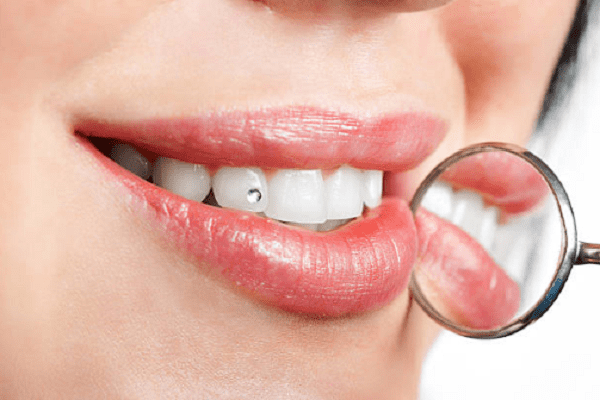
A smile is the first thing that attracts attention when meeting a person, and a decorated smile also adds personality. How can you decorate a smile? Of course, dental jewelry, which for many years now not only do not go out of fashion, but are also gaining in scope. If you think that decorated teeth are too much jewelry and vulgarity, then this article was written for you, as it will help you take advantage of the usefulness of these jewelry in everyday life!
How to decorate your teeth? What can be used as a decoration for teeth? These are grills, twinkles, skies and white-toothed decorative mouth guards.
The progenitors of dental jewelry can be considered fixes - so popular in the past false crowns for healthy teeth, made of precious metals, and indicating the level of a person's wealth.
From here originate and addiction to dentures made of precious metals (gold, platinum, silver and their alloys).
Today dental jewelry has acquired the status of precious jewelry, which is not customary to wear every day, but it is quite appropriate to use it as accessories for events where you can show off not only a necklace, bracelet, tiara in your hair, but also a dazzling smile inlaid with precious stones and precious metals.
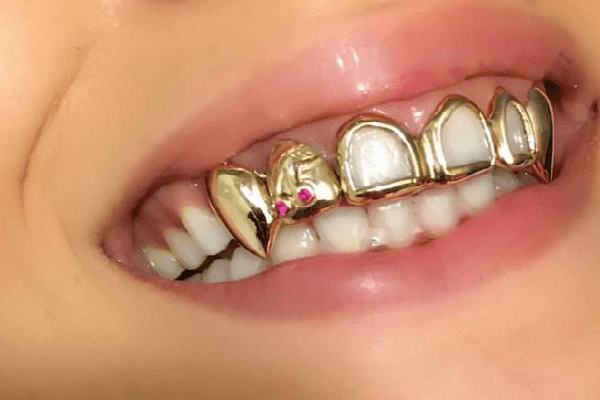
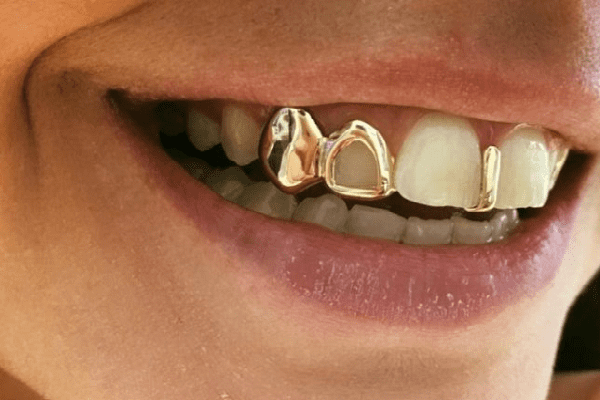
The name of each dental jewelry accurately reflects its purpose, so Grillz in English means "lattice", which it is, since it is a lattice overlay on the teeth, where teeth appear into the cells, and the interdental spaces and / or the incisal edges are closed with beautiful bridges. In their original form, grills did not cover all the frontal surfaces of the teeth, but more and more began to be decorated with engraving and stones, which fill most of the visible frontal part of the teeth, covering it completely or partially. And of course, dental design specialists put not only decor into dental jewelry, but also practical functions. So with grills, you can close the diastema or interdental three, hide the defect in the color of the teeth, which cannot be corrected by another gentle method, to correct the bite at least visually.
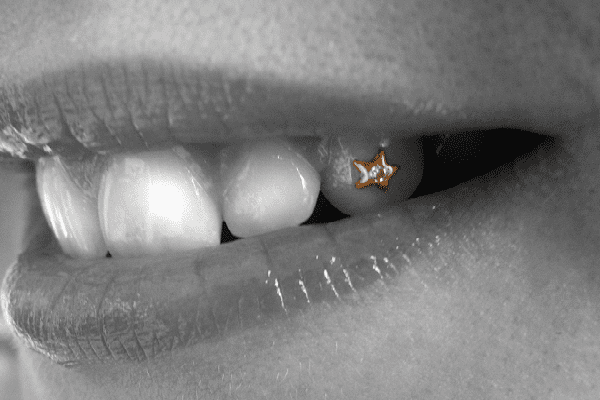
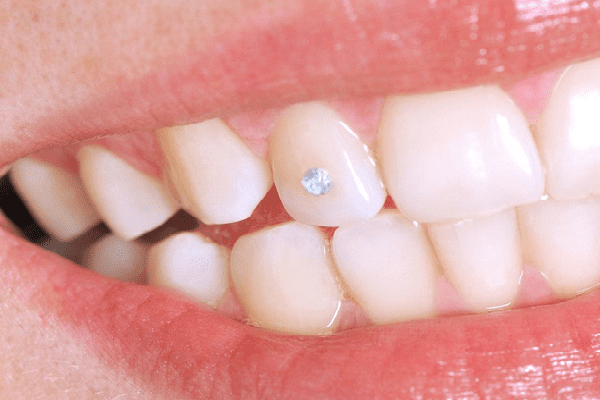
Twinkles are another dental decoration that is less bulky than grills, and, as a rule, is a non-removable structure, unlike grills, which are always removable.
Twinkles resemble mini ornaments on the frontal surface of one tooth (or one for each selected tooth) and are made using precious metals and alloys, as well as precious or semi-precious stones or chips (diamond chips, diamond dust). Twinkles are glued to or mounted on the teeth using light or chemically curing materials similar to composite restorative materials. The advantage of twinkles is that they are able to camouflage a defect in tooth enamel and tooth shape until the complete destruction of the coronal part. But even in this case, it is possible to recreate the tooth, using it as a permanent decoration. For these purposes, the crown part of the tooth is restored with orthopedic materials (pin teeth, restorative crowns), and after that they decorate with the elements they like, fixing them on the coronal part of the tooth. Many incurable diseases of tooth enamel and dentin can be camouflaged with twinkles.
Skyce (“artificial diamond”) are simpler non-removable ornaments for teeth made of artificial stones and crystal, but no less attractive for decorating teeth. Skies draw attention to the teeth, as they reflect the rays of light no worse than a natural diamond - they sparkle. Skies strengthen on the tooth like twinkles, but have a more sophisticated appearance, as they imitate diamonds.
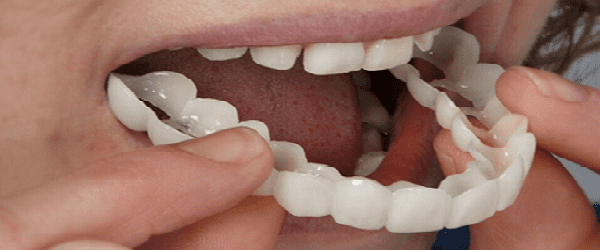
Removable white-toothed mouth guards (also called "removable veneers") - temporary removable structures that allow you to recreate a snow-white smile of any degree of whiteness for any celebration. The mouthguards are worn for the entire dentition, so talking in removable decorative mouthguards is also necessary to adapt. The aligners are made of thermoplastic plastics, which allows each mouthguard to be individually adjusted to the surface of the dentition. Before wearing, the mouthguard is warmed up in hot water, then put on the dentition and pressed firmly in the bite, in order to cool down, repeat the surfaces of the teeth. Despite the fact that the mouthguard, while cooling down, changes its configuration, it is not difficult to remove it from the dentition, and the adjustment occurs only once - in the very first case of putting on the mouthguard, then the mouthguard takes on an individual shape and does not require adjustment. These mouthguards can be used, when there is an urgent need to go "to people", for example, at the time of treatment, extraction or prosthetics of teeth, in order to hide unsightly temporary inconveniences with teeth.
Whatever the chosen dental decoration, it requires certain rules of wearing and caring for the teeth, since it creates retention points for a short or long time to retain food particles and oral infections. In order not to create dental health problems from dental jewelry, you must adhere to several rules:
- Before fixing removable aligners and grills, thoroughly brush your teeth.
- The correct dental jewelry is usually made to order, since it is they that will accurately repeat the configuration of the dental surfaces and dentition.
- Try to select dental jewelry according to the individual ratio of the jaws and the shape of the teeth in order to avoid overestimation of the bite and deformation of the temporomandibular joint.
- You should not wear jewelry that is too powerful in decor on your teeth - they can injure the mucous lips and contribute to the development of traumatic stomatitis, gingivitis, periodontitis, and sometimes periodontal disease, if the bone tissue has the prerequisites for thinning. Do not forget that dental jewelry is an additional load on the abutment teeth and a traumatic load on the teeth - the antagonists of the teeth on which the jewelry is worn.
- Allergic reactions to metals are another danger of wearing metal jewelry on your teeth. Sometimes even precious metals can cause allergies, not to mention metals with decorative dusting, which can be not only allergenic, but also chemically unstable in the oral cavity, where saliva is an acidic environment, and can create galvanic phenomena in the presence of metals when conditions arise for the transfer of metal ions from one metal structure to another, as well as in the gastrointestinal tract. This fact must be taken into account in cases of wearing removable or non-removable metal jewelry along with fixed or removable metal dentures.
- It should also be borne in mind that diamonds and diamond chips are capable of scratching the natural tooth enamel, thereby violating its integrity and creating conditions for its further, deeper cracking and destruction of tooth enamel and dentin in the future. Diamond jewelry is also capable of causing mechanical damage to ceramic and zirconium coatings of bridges and crowns, and to crowns, inlays and fillings made of plastic.
- Dental jewelry is contraindicated in cases where there is a history of gastrointestinal diseases associated with high acidity, the presence of heartburn, reflux, or GERD.
- Non-precious metals made even with a precious dusting can aggravate the symptoms of gastrointestinal tract and oral cavity diseases, if such problems already exist.
- Tartar or plaque from food with coloring components can also be deposited on jewelry.
- Untreated caries or mucosal diseases while wearing dental jewelry can recur and turn from a small invisible problem into a serious pathology.
The best dental jewelry is one that is custom made and consists of chemically inert elements - chemically stable metals, the most resistant of which are titanium, gold and platinum. Unfortunately, silver and silver-palladium alloys are not chemically stable and prone to oxidation, for this reason stainless medical steel and chromium-nickel or chromium-cobalt alloy are suitable for budget designs.
Dental adornments are made according to individually filmed casts from the dentition by modeling from wax and subsequent casting from metal. Stone inlay, decorative engraving, polishing or spraying are carried out after the metal frame has been cast.
The most common question comes up when it comes to fixing dental jewelry. And if dealing with adhesive and chemically curing materials for fixing jewelry in a permanent place is not a problem, then when it comes to removable structures covering several teeth or an entire dentition, the problem comes down to making special cushioning materials from the inside of the dental jewelry that have elastic and highly adhesive properties, allowing you to simultaneously hold dental jewelry on the teeth and not injure the surface of the teeth.
White-toothed mouthguards and grills, purchased as universal jewelry, are attached according to the same principle. Individual fit consists in the possibility of the material from which the designs of dental jewelry are made, bend when heated in hot water and fit to the dentition at the time of biting, and from the side of adhesion to the teeth to be fixed by means of an elastic pad.
Hard-fitting dental jewelry will result in trauma to the dental surface and delayed tooth loss.

Read

Read



























